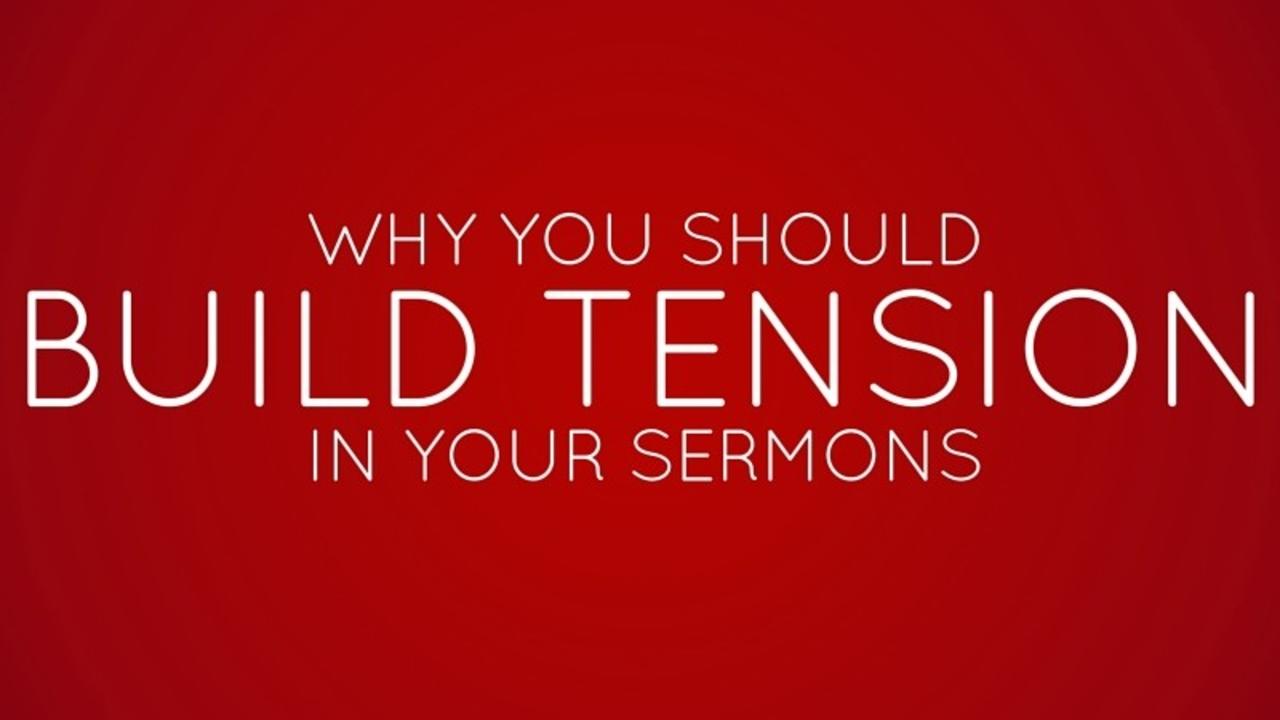Why You Should Build Tension in Your Sermons

As a preacher, it’s easy to focus on your content and not really consider if your listeners are ready to hear it.
You’ve been studying your material all week, and you’re totally energized by it. It’s all you’ve thought about for days. You are so excited to finally share these thoughts that are bursting out of you.
But your listeners aren’t there yet. They walked into church with everything on their minds except your sermon. They have nowhere near the same level of enthusiasm about your topic that you have.
That’s the way it works. You care. They probably don’t.
So what can you do?
One of the most basic theories of communication is Aristotle’s’ ethos, pathos, logos. This theory suggests that the best public speaking has all three:
Ethos, a credible speaker
Pathos, a message that moves people at a visceral level
Logos, a message that makes sense
In other words, your listeners are subconsciously requiring three things out of you if they are going to give you the right to speak to them:
You need to be trustworthy.
You need to move my heart.
You need to stimulate my mind.
If you do all three of those things your listeners are much more likely to give you an ear. But the order in which you do these actually makes a difference.
Most preachers, if they do all three, don’t get the order right. They often jump right into the arguments, the propositional truths, the “here’s-what-you-need-to-do” kind of stuff. They do this before they have sufficiently given their audience a reason to listen. These preachers think: If I can just convince them with logic, then they’ll be motivated to action.
The problem is, most of your listeners don’t operate that way.
Jacquelyn Smith writes a compelling article that discusses the mistakes public speakers make. She says one of the mistakes is being uninspiring:
Even more vital to persuasion than Logos, says Aristotle, is Pathos, which includes the right-brain activities of emotions, images, stories, examples, empathy, humor, imagination, color, sounds, touch, and rapport, Price says. “Tomes of studies show human beings typically make decisions based on emotions first (Pathos); then, we look for the facts and figures to justify it (Logos). Audience members do the same. With your words, actions, and visuals, seek first to inspire an emotion in them (joy, surprise, hope, excitement, love, empathy, vulnerability, sadness, fear, envy, guilt). Then, deliver the analysis to justify the emotion.”
An engaging, memorable, and persuasive presentation is balanced with both information and inspiration. “It speaks to the head and the heart, leveraging both facts and feelings,” she says.
If your goal in preaching is life-change, then wouldn’t it be better to put some of the pathos ahead of the logos? To get your audience to feel a problem before they know the solution?
You have to keep in mind that although you are totally convinced of your arguments and why they matter, your audience is not. Take the time to do the hard work of bringing your listeners to the point that they want to listen. Andy Stanley calls this “building tension” and it is what every good storyteller does. Every good story captures your heart first, and then points you to the solution or resolution
Preaching this way allows God to be the hero of every story. God is the answer to the question, the healer of the pain, the hope for the hopeless situation.
Try this in your next sermon… Before you get to the answer, really set up the problem. Before you get to the facts, truths and arguments make sure you get them to understand why they should care. Why it matters. Put the feel before the know.
Present the problem in such a way that everyone in the room feels it. Then let them know what the answer is. The answer is found in Scripture. In Jesus. In the gospel. This approach teaches people to go to God with their real-life problems. In my new book, Preaching Killer Sermons, I build this concept out in a chapter called “Give Them a Reason to Keep Listening: Why Your Listeners Must Feel it Before They Care about it.” Check it out here.
What has worked for you? Have you seen a communicator put the feel before the know? How did it work?


